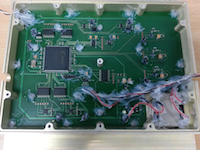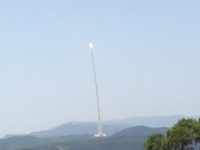
探空十號火箭/數位姿態量測(制式)模組
國科會國防科技學術合作研究計畫主持人:趙吉光副教授
(Launched at 11:10, 10/07/2014)
Taiwan’s sounding rocket programs are funded by National Space Organization since 1997. The rockets are fabricated by Chung-Shan Institute of Science and Technology (CSIST) to provide vehicle services for domestic scientific missions. Attitude information of the rockets is first available from an ASpectMeter (ASM) fabricated National Central University, which is onboard SR-VIII. The ASM consisted of a combined 3-axis (single axial + dual-axial measurement) analog MEMS-based gyroscope, magnetometer, and accelerator with a digital processing system. However, for rocket stability it is possible to raise the spin rate of future rocket to 1,620°/s instead of 1,500 °/s now. After nose cone is separated, a Yo-Yo de-spin is required by scientific mission to reduce the spin rate down to 360°/s. Meanwhile, the analog sensors can be susceptible to other electronic devices to reduce their sensitivities. Alignment between the single axial sensor and the dual axial sensor may cause additional problems in assembly. If the gyroscope is used to measure cone motion of the rocket, high resolution in a small angle motion shall be provided in cross direction. Based on the previous weakness and current requirements, a new ASM design is proposed to meet the challenge of SR-X mission.

